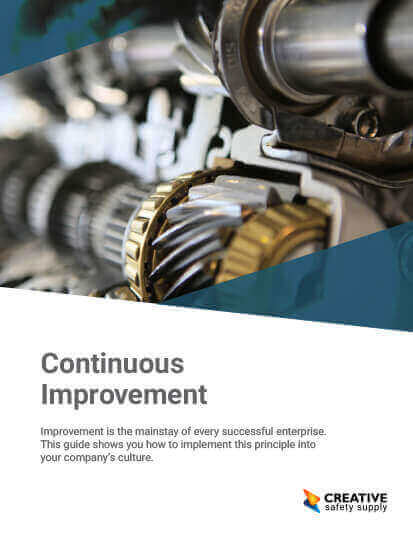
In the realm of process improvement and quality management, the DMAIC cycle stands as a cornerstone methodology. DMAIC, an acronym for Define, Measure, Analyze, Improve, and Control, is a structured approach used to solve complex problems and enhance processes. In many facilities, a Continuous Improvement Manager orchestrates these activities, but it can really be done by any employee that has management authority in an organization. Let's dive into the details of each phase and understand how this cycle contributes to organizational excellence.
Define Phase: Defining the Problem and Goals
The journey of DMAIC begins with the "D" – Define. In this phase, the primary focus is on understanding the problem and defining the project's scope. Key activities include:
- Problem Identification: Clearly articulating the problem or challenge that needs resolution.
- Goal Setting: Defining specific, measurable objectives that align with the organization's goals.
- Scope Definition: Determining the boundaries of the project and its impact on processes.
- Stakeholder Identification: Identifying the individuals or teams affected by the problem and its solution.
Measure Phase: Gathering Data and Establishing Baselines
Once the problem is defined, the "M" – Measure phase kicks in. This stage involves collecting relevant data to understand the current state of the process. Key activities include:
- Data Collection: Gathering quantitative and qualitative data related to the process.
- Process Mapping: Creating a visual representation of the process flow to identify bottlenecks and inefficiencies.
- Baseline Establishment: Establishing a baseline performance metric to measure improvements against.
- Data Analysis: Using statistical tools to analyze the collected data and identify patterns.
Analyze Phase: Identifying Root Causes and Patterns
Moving forward, the "A" – Analyze phase delves into a deeper examination of the problem. This stage focuses on understanding the root causes of issues and identifying trends. Key activities include:
- Root Cause Analysis: Utilizing tools like fishbone diagrams or 5 Whys to identify the underlying causes.
- Data Interpretation: Analyzing data trends to gain insights into the contributing factors.
- Identifying Patterns: Recognizing recurring patterns that affect process performance.
- Prioritization: Prioritizing the root causes based on their impact and feasibility of resolution.
Improve Phase: Developing and Implementing Solutions
The "I" – Improve phase is where solutions are devised and implemented to address the identified root causes. Key activities include:
- Solution Generation: Brainstorming and developing potential solutions to mitigate the root causes.
- Pilot Testing: Implementing the proposed solutions on a smaller scale to assess their effectiveness.
- Data Validation: Collecting data during the pilot phase to verify the improvements.
- Full Implementation: Rolling out the solutions across the entire process or organization.
Control Phase: Ensuring Sustainable Improvement
The concluding phase, "C" – Control, is all about ensuring that the improvements are sustained over the long term. Key activities include:
- Performance Monitoring: Continuously tracking process performance and comparing it to the established baseline.
- Documentation: Documenting the new process standards, procedures, and best practices.
- Feedback Loops: Establishing mechanisms for regular feedback from stakeholders.
- Preventive Measures: Identifying potential deviations and implementing measures to prevent them.
Benefits of the DMAIC Cycle
The DMAIC cycle provides a structured and data-driven approach to process improvement, resulting in several benefits:
- Problem Resolution: Systematically addressing complex problems and challenges.
- Data-Informed Decisions: Using data to make informed decisions and improvements.
- Continuous Improvement: Fostering a culture of ongoing enhancement within the organization.
- Efficiency Gains: Streamlining processes to reduce waste and enhance productivity.
- Quality Enhancement: Improving process quality and reducing defects.
The DMAIC cycle is a robust methodology that guides organizations through the process of problem-solving and the Continuous Improvement Process itself. By meticulously defining problems, analyzing data, developing solutions, and establishing controls, DMAIC empowers organizations to achieve efficiency, quality, and excellence in their processes. Embracing this methodology can lead to transformative results, ensuring that businesses remain competitive and adaptable in today's dynamic business landscape.
Similar Questions
- What is the Continuous Improvement Process?
- What is a Continuous Improvement Manager?
- How do Continuous Improvement and Lean Increase Efficiency?
- What is a Continuous Improvement Engineer?
- What are Continuous Improvement methodologies?
- What is Continuous Improvement?
- What does Continuous Improvement and Innovation mean?
- How is Continuous Improvement related to Kaizen?
- How does critical thinking relate to skill development?

